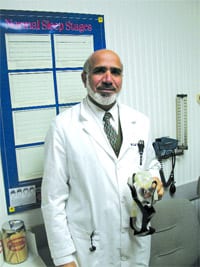Opinion News Is Positive For Cancer Survival Rates
There are 9.8 million cancer survivors in the United States, according to a new report by the Centers for Disease Control and Prevention (CDC) and the National Cancer Institute (NCI). A cancer survivor is defined as anyone who has been diagnosed with cancer, from the time of diagnosis through the balance of his or her life.
“Cancer is the second-leading cause of death in the United States after heart disease. The number of cancer survivors in this country has increased steadily over the past 30 years for all cancers combined. We expect the number of survivors to increase as improvements are made in cancer detection, treatment, and care and as the population ages,” said Tommy G. Thompson, secretary of the U.S. Department of Health and Human Services.
The report was produced by NCI in partnership with CDC. The authors used incidence and follow-up data from NCI’s Surveillance, Epidemiology, and End Results (SEER) program to estimate annual cancer prevalence — the number of people living following a diagnosis of cancer — and trends in cancer survivorship.
The data show that:
• Sixty-four percent of adults whose cancer is diagnosed today can expect to be living in five years;
• Breast cancer survivors make up the largest group of cancer survivors (22{06cf2b9696b159f874511d23dbc893eb1ac83014175ed30550cfff22781411e5}), followed by prostate cancer survivors (17{06cf2b9696b159f874511d23dbc893eb1ac83014175ed30550cfff22781411e5}) and colorectal cancer survivors (11{06cf2b9696b159f874511d23dbc893eb1ac83014175ed30550cfff22781411e5});
• The majority (61{06cf2b9696b159f874511d23dbc893eb1ac83014175ed30550cfff22781411e5}) of cancer survivors are age 65 or older;
• An estimated one of every six people over age 65 is a cancer survivor; and
• Seventy-nine percent of childhood cancer survivors will be living five years after diagnosis, and nearly 75{06cf2b9696b159f874511d23dbc893eb1ac83014175ed30550cfff22781411e5} will be living 10 years following diagnosis.
“The findings in this report have important implications for both the public and health practitioners,” said Dr. Loria Pollack, CDC medical officer.
“There is a growing need to promote health and ensure the social, psychological, and economic well-being of cancer survivors and their families.
“In the past, public health programs concentrated on early detection and prevention of cancer. However, the focus has now expanded to include cancer survivorship, transforming survivorship research into practice, and developing clinical guidelines to provide attentive follow-up and health promotion to survivors.”
CDC’s Division of Cancer Prevention and Control is supporting states, tribes, and tribal organizations to develop and incorporate survivorship priorities into their comprehensive cancer control plans. CDC is also working with national organizations to promote education, awareness, and community programs that offer services and support for cancer survivors.
In response to the growing number of cancer survivors in the United States, many organizations are involved in survivorship issues. Recently, CDC and the Lance Armstrong Foundation released A National Plan for Cancer Survivorship: Advancing Public Health Strategies. Also, the President’s Cancer Panel released a report, Living Beyond Cancer: Finding a New Balance, earlier this summer.
“Issues faced by cancer survivors include maintaining optimal physical and mental health, preventing disability and late effects related to cancer and its treatment, and ensuring social and economic well-being for themselves and their families,” said Dr. Julia Rowland, director of the Office of Cancer Survivorship at NCI.
She added, “NCI takes these factors into consideration when conducting research to identify, examine, and prevent or control adverse effects associated with cancer. We are working to enhance survivors’ quality of life.”
Kevin Brady is the director of the Division of Cancer Prevention and Control, an arm of the CDC’s National Center for Chronic Disease Prevention and Health Promotion. Among other activities, the center conducts public health surveil-lance, epidemiologic studies, and behavioral interventions; disseminates guidelines and recommendations; and assists state health and education agencies in preventing chronic diseases and promoting healthful behaviors.



Comments are closed.